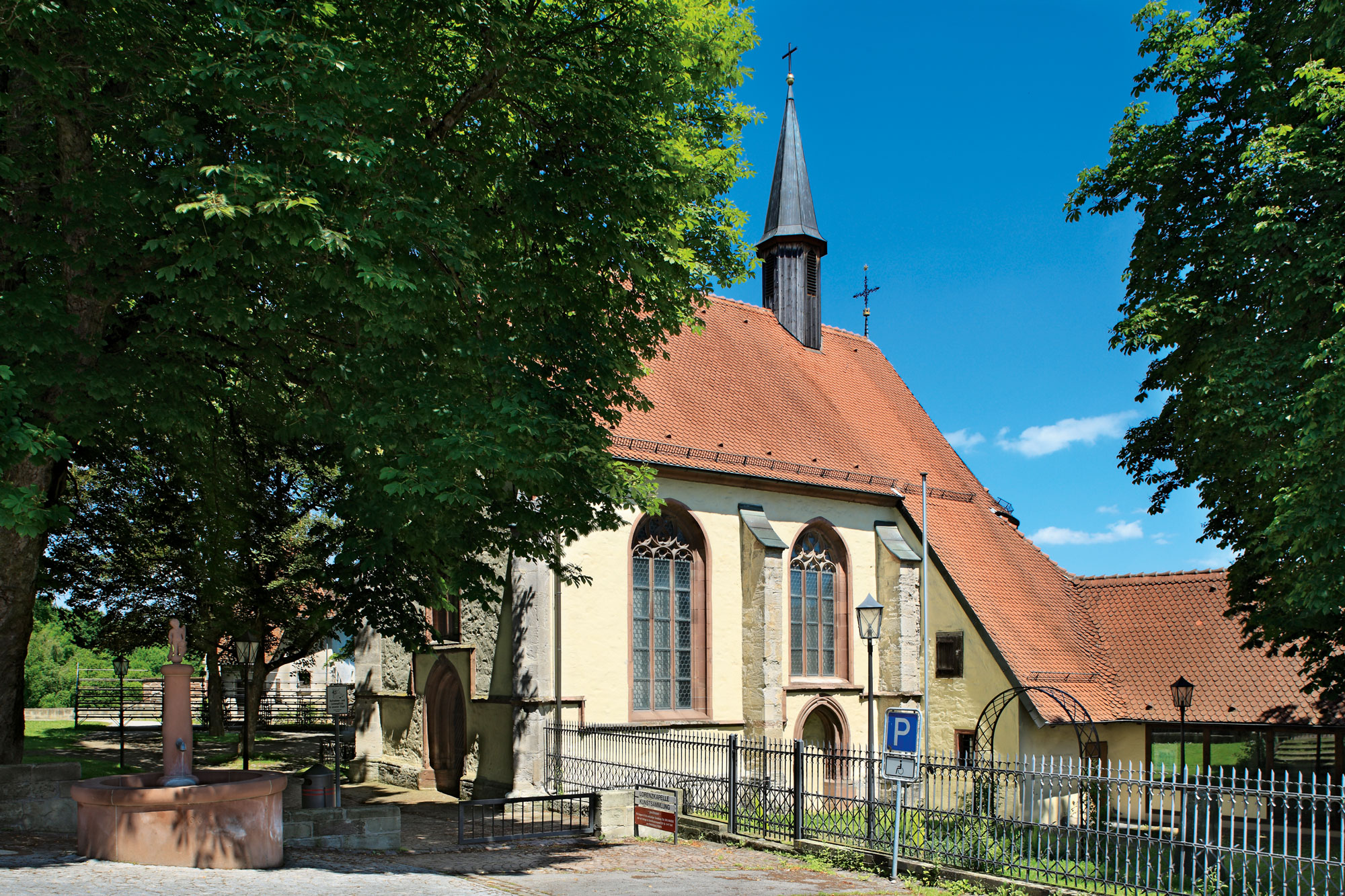Behind the “Predigerkirche” and the “Dominikanermuseum” you enter a picturesque and historic park lined with old chestnuts that, in summer, becomes the open-air stage of the “Zimmertheater” in Rottweil: the “Bockshof” courtyard is also known as “Alter Gottesacker” or “Old God’s Acre”.
In 1500, on the occasion of Hans Kaspar von Bubenhofen’s marriage with Agnes von Hewen, a great jousting tournament was held, with races and lances. The chronicles of the noblemen of Zimmern tell us that: „Twas running there and stabbing, by the lords and noblemen. Thus, they took hold of the Bockshoff itself, and that went off quite splendidly”.
The name Bockshof stems from the Bock family. Today, it is hard to imagine that, earlier, a small citadel once stood here, at the northeastern corner of the town. The historic map created by David Rötlin in 1564, shows the grand houses that still stand on the site. From about 1579 onwards, the Rottweil architect, Hans Weber von Werth, who had been working on the “Hochturm” and the “Schwarzes Tor”, tore down the buildings in this area to erect the cemetery chapel of “St. Lorenz”, with a new “God’s Acre”. Rottweil’s deceased citizens were buried here until 1832, while the funeral service was held in the small chapel. After the cemetery was moved outside the town gates, “St. Lorenz” was secularised. In 1851, Dr. Martin Dursch’s remarkable collection of late medieval wood sculptures was exhibited in this small, former chapel. Dursch’s collection is now in the Dominikanermuseum. The “Lorenzkapelle” displays impressive items featuring Rottweil stonemasonry, including the original sculptures from the chapel tower.
The small “Pulverturm” or “powder tower” was used to store the gunpowder of the imperial town and was one of the powder warehouses of the “Schwäbischer Kreis”. The enclosed porch at the front of the building was added after 1900. Next to the tower, there is a severely weather-beaten tombstone. It is the tomb of Dr. Vogel, the last town doctor of Rottweil to be appointed by the magistrate of the free city.
For financial reasons and because of “the fresher and healthier air”, the Rottweil town council decided in 1805 to “take down the wall around the town at the site of God’s Acre by about 7 to 8 feet”. This, of course, meant that a sizeable part of the fortified pathway next to the Pulverturm was destroyed.
Take a look at the “Schwäbische Alb” from the wall – it’s well worth it. You can see five of the ten “thousanders”, or mountains higher than 1,000 metres. Down in the Neckar valley you can still recognize Dreher’s and Kochlin’s Mühle, two of about 12 big mills that used to stand along the river.
Walking along the town wall towards the “Dominikanermuseum”, which was built on the site of the former Dominican monastery, you come to „Nägelis Törlein“. The small gate had already been mentioned in 1440. During a major cattle plague in 1796, the animals’ carcasses were carted out of town through this gate and into the “Nägelesgraben”. There were small gates like these built into the town wall, in addition to the big main gates.
Up ahead, you can still see the ruins of the “Predigerturm”. This tower had deteriorated over time and finally collapsed in the 19th century. It fell into the moat. For a long time, the neighbours complained that there were still piles of stones lying in their yards, and which needed to be removed.
Most likely, the Bockshof was not too idyllic in the 19th century. The area behind the houses was bordered by a large dung heap.

















